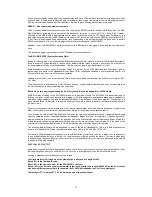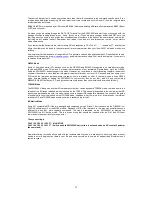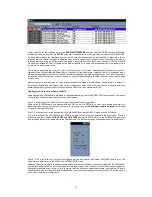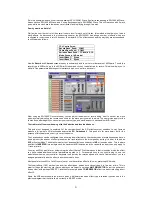
13
Chapter 3
Essential tools and why they are so important. (Hubis
loopback, MIDI-OX, MIDI-Yoke, XGEDIT)
If we had to say why is XG now used by over 10 million people, why is it so acclaimed in the industry, and why is it so
powerful, we could just say ‘Because Yamaha are cool!” One of the key reasons though behind the success of XG is
a man by the name of Gary Gregson.
When we first starting working with XG back in the early 90’s many of the original data programmers (the guys who
slaved over the demo tunes) had to manually type in sysex data. Then manually check that it was in the correct order
(XG is very fussy about data order), and then make sure that the MIDI-file or voice we were working on would work in
every sequencer. Now to say that this was time-consuming and tedious would be like saying that Albert Einstein was
‘A bit of a bright chap!’ It would be the understatement of the decade.
So we began to hunt the Internet for some decent editing software, the hunt didn’t take very long!
XGEDIT
Gary Gregson had already made up a nice little editor for the GS range of instruments, known as SCEDIT. Yamaha
sent Gary a polite little email asking him if he would be interested in writing a similar application for the (at that time)
brand new DB50XG card (another hugely successful XG device), to which (thankfully) Gary said ‘Go on then!’ Thus
the legend that is XGEDIT was born. We cannot understate the importance of XGEDIT with regards to XG, as its
superb GUI (Graphic User Interface) and simple layout has made controlling the power of XG a pleasure for literally
tens of thousands of people. XGEDIT supports a wide range of Yamaha’s XG modules and soundcards.
At the top of its supported products tree proudly sitting and looking down at the others is the SW1000XG.
XGEDIT is shareware, Gary Gregson wrote this application and retains the full rights to it. As with all good shareware
(which anyone will confirm, this is very good!) it should be registered after 21 days of use. This can be done with
Yamaha via the virtual shop at
www.yamaha.co.uk/shop
. At only £25 (around 40 dollars) many have said it’s the best
investment they have ever made. The shareware version does everything that the full version will do, except save
your edits, so you can get a full feel for how it all works, and how much control you can get over the SW1000XG. For
the purposes of this guide, we recommend you have a copy of XGEDIT, unless you are exclusively using the bundled
XGWorks application, which has the functionality of XGEDIT but embedded within a sequencer engine of its own.
XGEDIT can be downloaded from
http://www.yamaha.co.uk/xg/html/software/s_XGEdit.htm
It will form the basis of
many of the chapters in this guide, so please try and get hold of a copy if you can.
XGEdit comes with a comprehensive user guide/help file. This allows you to really get to grips with how it works, what
it can do, and what levels of support are offered for each Yamaha module and soundcard. It runs on several
operating systems including Windows NT, and forms an essential part of Yamaha UK’s editing toolkit for XG.
As of August 1999 XGEdit is supplied on the SW1000XG CD-ROM (Windows 95/98/NT/2000)
HUBIS LOOPBACK
The second of our essential tools set is Hubis loopback MIDI driver. As most people would want to be able to use the
SW1000XG inside their sequencer of choice (such as Cubase or Cakewalk for example), the use of a MIDI piping
system with the SW1000XG became essential. This is due to the fact that the MIDI driver originally supplied with the














































